Witness the mystery of the carbuncle in biblical texts, where its dual symbolism of suffering and beauty intrigues and invites deeper exploration.
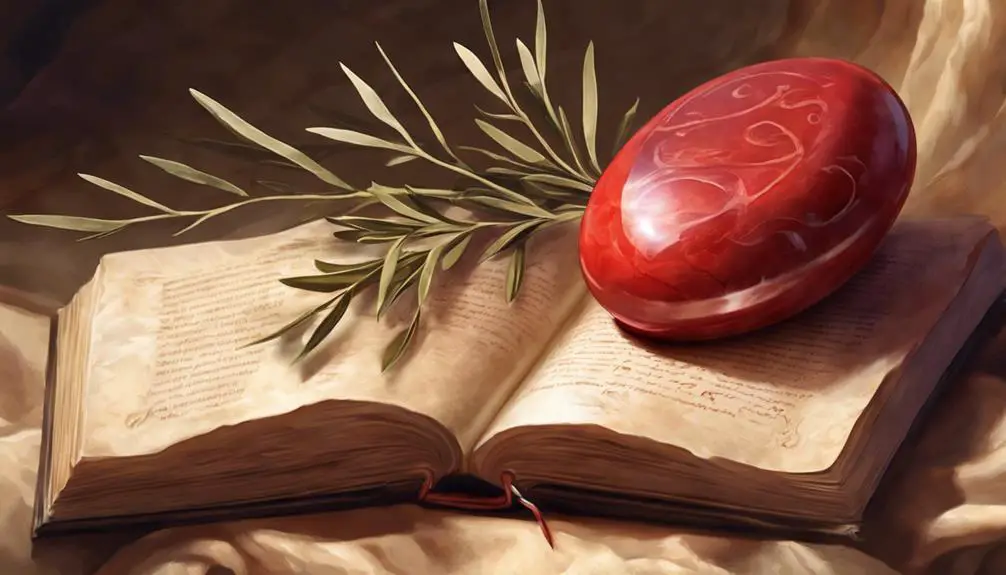
Carbuncle in the Bible
In the ancient texts, a carbuncle symbolizes both affliction and beauty, a juxtaposition that might confuse you at first glance. You've likely encountered its mention in the Bible, nestled within descriptions of sacred vestments and divine visions, but have you ever paused to ponder its deeper meaning?
This gemstone's biblical appearances and symbolism carry layers of historical and cultural significance that beg for a closer examination. By reflecting on its role and interpretations, you'll uncover insights into not only the past but also how ancient wisdom can illuminate our understanding of the present.
Let's embark on this exploration together, and you might find more than you expect.
Key Takeaways
- Carbuncle symbolizes divine presence, authority, and protection in biblical references.
- Variations in translation highlight the complex symbolism of carbuncles across different biblical narratives.
- Modern interpretations of carbuncles provide deeper insights into their spiritual and symbolic significance.
- Ethical and theological discussions are prompted by the biblical portrayal of carbuncles, questioning the correlation between material wealth and divine favor.
The Definition of Carbuncle
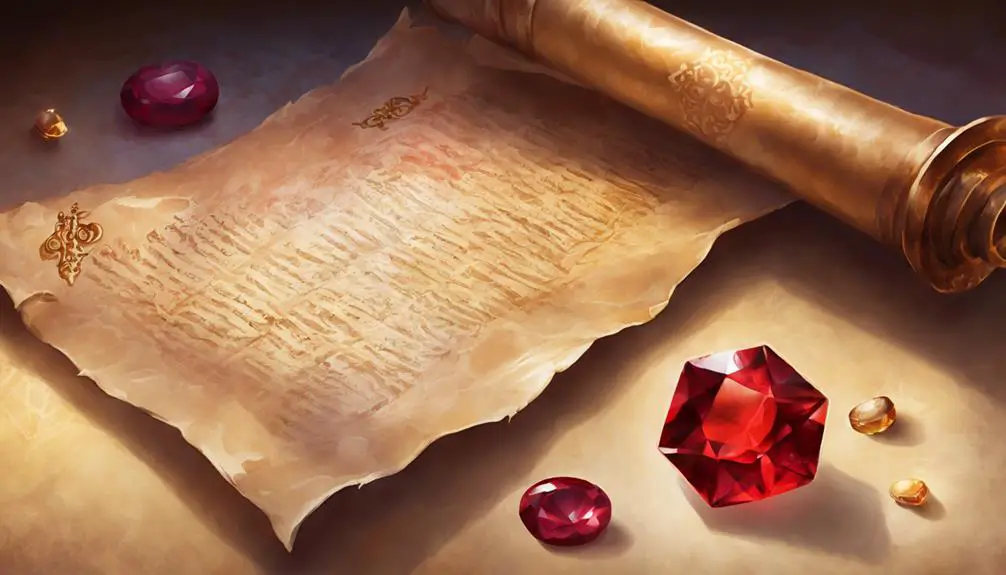
In an analysis of the term 'carbuncle' as it appears in biblical texts, one finds that it historically refers to a red gemstone, often equated with a garnet, symbolizing aspects of divinity and light. This identification is crucial for understanding the term's usage and significance in religious and cultural contexts. The term 'carbuncle' itself has evolved over time, initially denoting a precious stone believed to possess unique properties, including the ability to illuminate one's surroundings and represent divine illumination.
However, it's essential to distinguish this historical and biblical use from the term's modern medical application, which refers to a different kind of carbuncle entirely—a severe skin infection involving a group of hair follicles. This differentiation is vital for anyone delving into biblical texts or ancient manuscripts, as the context drastically changes the term's interpretation. When considering carbuncle in its biblical sense, one is engaging in gemstone identification rather than discussing medical treatment.
The process of identifying gemstones like the carbuncle mentioned in biblical accounts involves examining their color, clarity, cut, and carat weight. Historical texts and archaeological findings have contributed to our understanding of how ancient cultures, including those referenced in the Bible, valued and utilized these gemstones. They weren't only ornamental but also held spiritual and symbolic significance, embedded in religious artifacts and priestly garments as tokens of divine favor and protection.
Therefore, understanding the term 'carbuncle' within its biblical context requires a multifaceted approach, combining gemological knowledge with historical and theological analysis. This ensures a comprehensive grasp of its significance, beyond its mere lexical meaning, illuminating its role in ancient religious practices and beliefs.
Carbuncle's Biblical Appearances
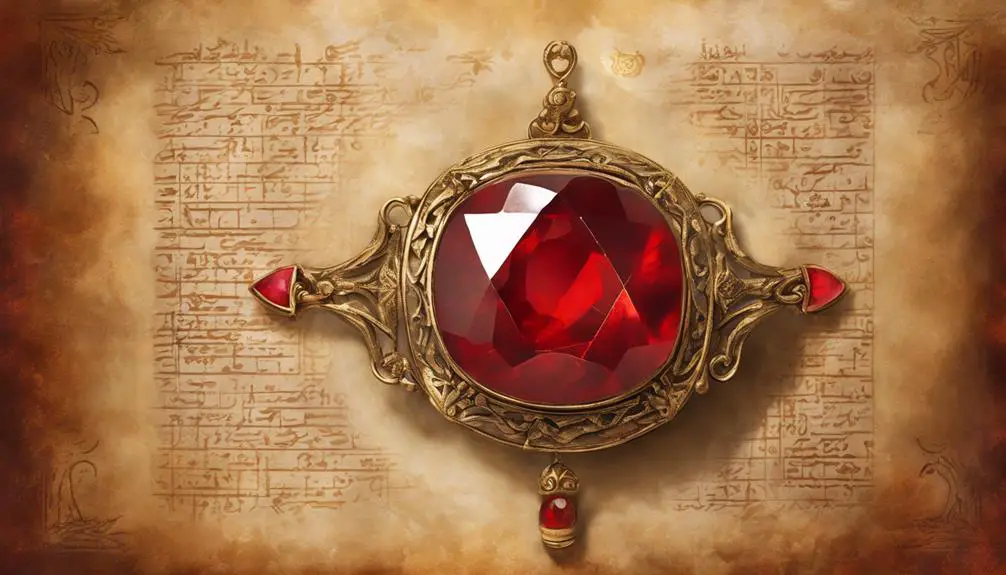
Having established the gemological and symbolic significance of the carbuncle in ancient texts, we now turn our attention to its specific appearances within the Bible, shedding light on contexts and interpretations that enrich our understanding of these passages. The carbuncle, mentioned several times, plays a noteworthy role, particularly in the context of sacred objects and divine symbolism. Its appearances are not only significant for their frequency but also for the variations in translation and interpretation that they have undergone over centuries.
To give you a clearer picture, consider the table below, which highlights key biblical references to the carbuncle, alongside their respective contexts and notes on translation variations:
Reference |
Context |
Translation Variations |
|---|---|---|
Exodus 28:17 |
Part of the High Priest's breastplate |
Sometimes translated as "ruby" or "emerald" |
Ezekiel 28:13 |
Description of Eden, the garden of God |
Interpreted as "ruby" in some translations |
Isaiah 54:12 |
Figurative language describing the future glory of Zion |
Varied as "sparkling gem" or specific gemstone descriptions |
Revelation 21:20 |
Foundations of the New Jerusalem |
Listed among other precious stones, translation consistency varies |
These appearances underscore the carbuncle's importance, not just as a physical gemstone but as a symbol intertwined with divine and priestly themes. The translation variations highlight the challenges in pinpointing the exact nature of the carbuncle in modern times, reflecting broader issues in biblical interpretation related to gemstone descriptions. Each reference invites a deeper dive into the symbolic and literal significance of the carbuncle, contributing to a more nuanced understanding of biblical imagery.
Symbolism and Significance
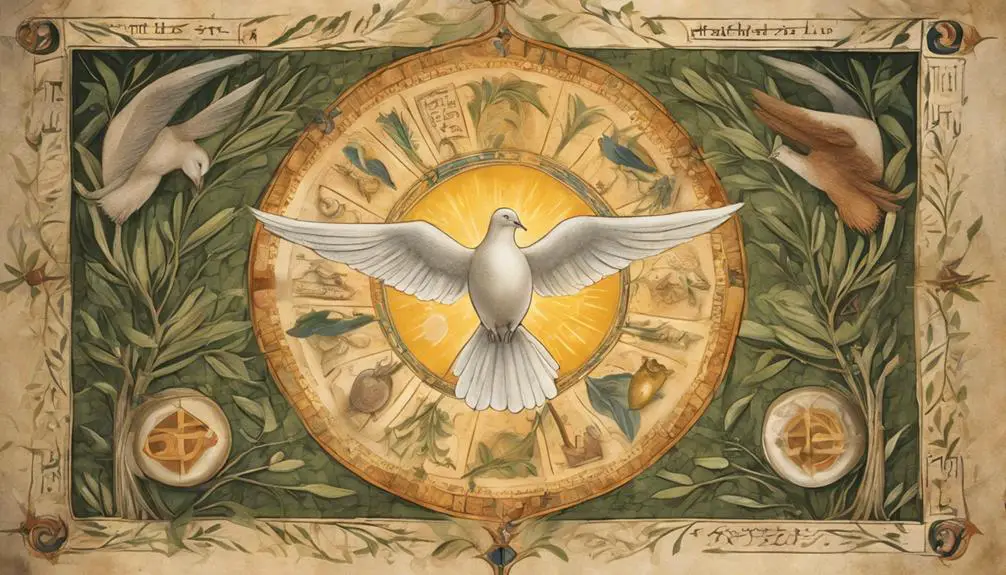
As we delve into the symbolism and significance of the carbuncle within biblical texts, it's crucial to understand how this gemstone embodies themes of divine illumination and priestly authority. The carbuncle's rich, deep hue and radiant glow serve as powerful gemstone metaphors, reflecting not only the majesty of God but also the spiritual enlightenment and guidance afforded to His followers. The theological implications of this symbolism are profound, offering insights into the nature of divine presence and the role of religious leaders.
The significance of the carbuncle in biblical narratives can be summarized in the following points:
- Divine Presence: The carbuncle, with its luminous appearance, symbolizes the ever-present light of God, guiding and illuminating the path for believers. It represents the divine glow that penetrates the darkness of human existence, offering hope and direction.
- Priestly Authority: Set in the breastplate of the High Priest, the carbuncle signifies the authority granted by God to religious leaders. It underscores their role as intermediaries between the divine and the earthly realms, tasked with guiding the faithful and upholding divine law.
- Protection and Healing: In biblical times, gemstones like the carbuncle were believed to possess protective and healing properties. Its inclusion in sacred garments symbolizes God's promise to safeguard and heal His people, both physically and spiritually.
- Covenant and Commitment: The carbuncle's enduring brilliance serves as a reminder of the everlasting covenant between God and His people. It underscores the commitment of both parties to uphold their divine relationship.
Historical and Cultural Context
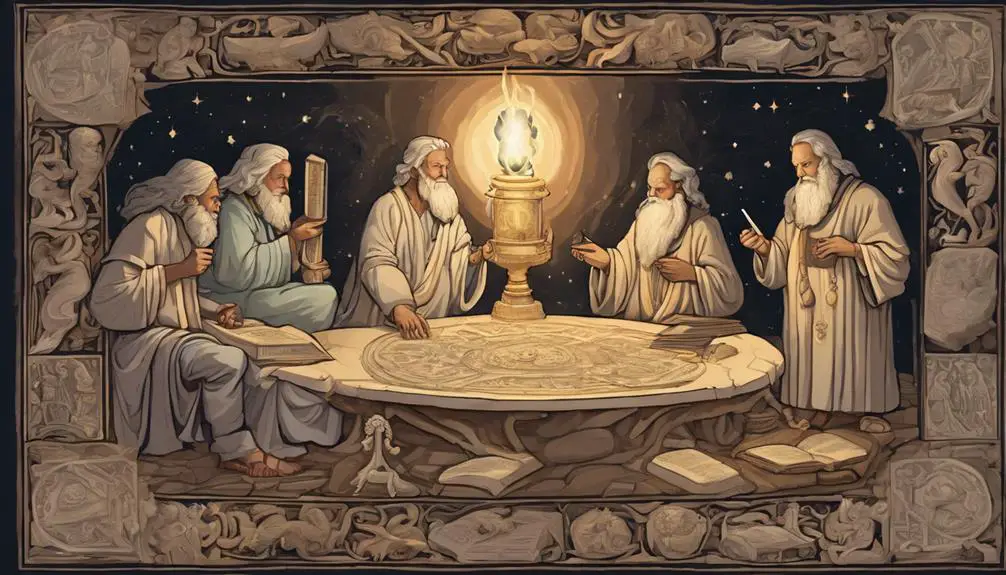
To grasp the carbuncle's role in biblical narratives, it's essential to explore its historical and cultural context within ancient societies. Ancient mining techniques and the geographic origin of gemstones, including carbuncles, provide insight into their significance and value during biblical times. You'll find that ancient mining, a labor-intensive and skillful practice, was deeply intertwined with the cultural and economic fabrics of these societies.
The geographic origin of carbuncles, often linked to regions in the Middle East and parts of India, highlights the extensive trade networks that existed in ancient times. These stones weren't merely decorative; they symbolized wealth, power, and divine favor. The effort to acquire them through ancient mining operations underscores their importance. These operations, often dangerous and requiring precise knowledge of geology, reflect the high value placed on carbuncles and other gemstones.
Understanding the historical and cultural context sheds light on why carbuncles were so revered. Their inclusion in biblical narratives isn't just a matter of adornment but signifies a deeper connection to the divine, a representation of the high esteem in which these gemstones were held. The mention of carbuncles in sacred texts emphasizes their significance beyond mere physical beauty, pointing to their role as symbols of protection, authority, and divine right.
Reflecting on Modern Interpretations
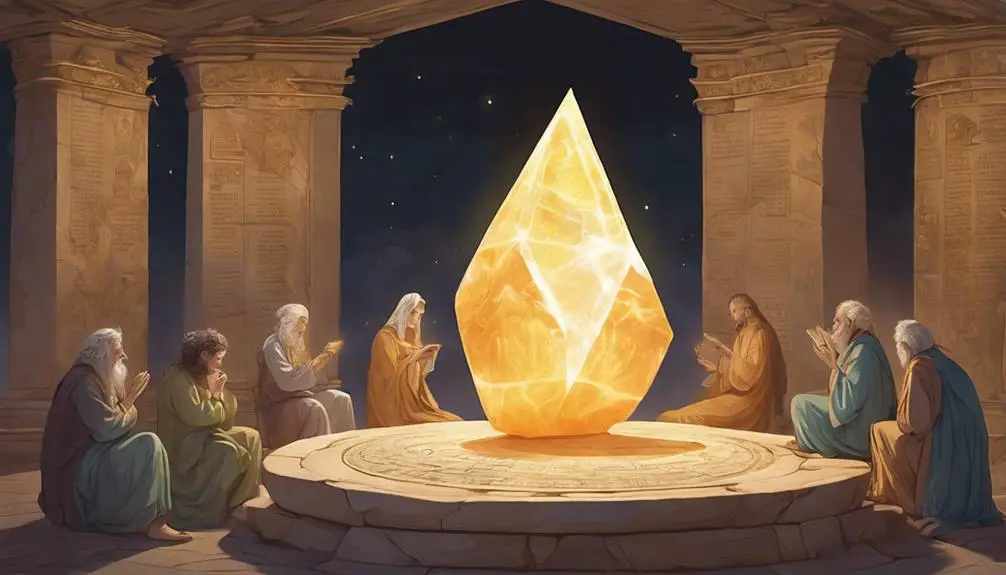
Reflecting on the historical and cultural context, let's now explore how modern interpretations of carbuncles in biblical narratives offer new insights into their symbolic significance. These interpretations not only deepen our understanding of the text but also provoke thoughtful ethical implications and theological debates. Here are four key aspects to consider:
- Symbolism and Metaphor: Modern scholars suggest that carbuncles, with their fiery red appearance, symbolize divine presence, passion, and perhaps even judgment. This interpretation invites readers to reflect on the nature of divine interactions with humanity, proposing a more nuanced understanding of divine communication and intervention.
- Ethical Implications: The portrayal of carbuncles in sacred texts raises questions about the ethics of beauty, wealth, and their correlation with divine favor. Contemporary discussions challenge the notion that material wealth signifies moral or spiritual superiority, urging a reevaluation of values.
- Theological Debates: The interpretation of carbuncles has sparked debates regarding their role in eschatological narratives. Some modern theologians argue that these stones represent the unyielding, enduring nature of faith even amidst tribulation, offering a hopeful perspective on resilience and redemption.
- Cultural Relevance: Today's interpretations also emphasize the importance of understanding biblical symbols like carbuncles within their original cultural context to avoid anachronistic readings. This approach fosters a more authentic engagement with the text, allowing for richer, more relevant applications in contemporary life.
Frequently Asked Questions
How Does the Carbuncle's Depiction in the Bible Compare to Its Representation in Other Ancient Texts or Religions Outside of Christianity and Judaism?
You're diving into gemological comparisons and ancient myths to explore how the carbuncle is portrayed across various cultures.
Unlike its biblical significance, in other ancient texts or religions, the carbuncle often symbolizes wealth, protection, or supernatural power.
Through scholarly analysis, you'll find that each culture imbues the gem with unique qualities, reflecting their values and beliefs.
This objective inquiry highlights the fascinating diversity in the symbolism of gems throughout history.
Are There Any Specific Healing Properties or Protective Powers Attributed to Carbuncles in Biblical Narratives or Related Traditional Beliefs?
In the tapestry of ancient lore, carbuncles shimmer as gems with purported healing and protective virtues. When you delve into gem identification, these stones emerge as symbols of vitality and safeguarding.
Modern interpretations continue to echo these ancient beliefs, drawing connections between the carbuncle's legendary attributes and its metaphysical properties. Scholarly analysis reveals a consistent thread: carbuncles are esteemed not just for their beauty but for their supposed power to heal and protect.
Can the Carbuncle Be Linked to Any Particular Biblical Figures or Saints, Influencing Their Stories or the Attributes Commonly Associated With Them?
You're exploring how gem symbolism and historical accuracy intertwine in narratives, particularly focusing on whether specific biblical figures or saints are connected to carbuncles.
This inquiry delves into the layers of tradition and scripture, analyzing how these precious stones might've influenced the attributes or stories associated with historical or mythical personalities.
How Have Artists and Craftsmen Historically Depicted the Carbuncle in Religious Artifacts, Jewelry, or Art Inspired by the Bible?
In examining how artists and craftsmen have historically depicted gemstones, you'll find carbuncles often emerge in religious artifacts, jewelry, or art.
Medieval interpretations played a key role, imbuing these works with rich gemstone symbolism. They weren't just decorative; they symbolized deeper theological and philosophical concepts, reflecting the beliefs and values of their time.
This analytical look into their use shows carbuncles as more than mere adornments, but as carriers of profound spiritual significance.
What Role Does the Carbuncle Play in Contemporary Spiritual Practices or Beliefs, if Any, Outside of Academic or Historical Interest?
You're diving into modern gemology interpretations, a field where the carbuncle's role has evolved beyond its historical context.
In contemporary spiritual practices, it's less about specific artifacts and more about spiritual symbolism exploration.
This gem's qualities and lore are analyzed for their metaphysical properties, influencing personal growth and healing practices.
It's fascinating how this ancient symbol has transitioned into a tool for modern spiritual seekers, enriching their journey with its storied past.
Conclusion
In conclusion, the carbuncle's presence in the Bible transcends a mere gemstone, embodying profound symbolic significance within its historical and cultural milieu.
Consider the image of a solitary carbuncle illuminating Aaron's breastplate in the dim light of the Tabernacle; this not only showcases its aesthetic allure but also elevates its role as a divine connector.
Through scholarly examination, it's clear that modern interpretations continue to explore its multifaceted symbolism, enriching our understanding of biblical narratives and their enduring legacy.


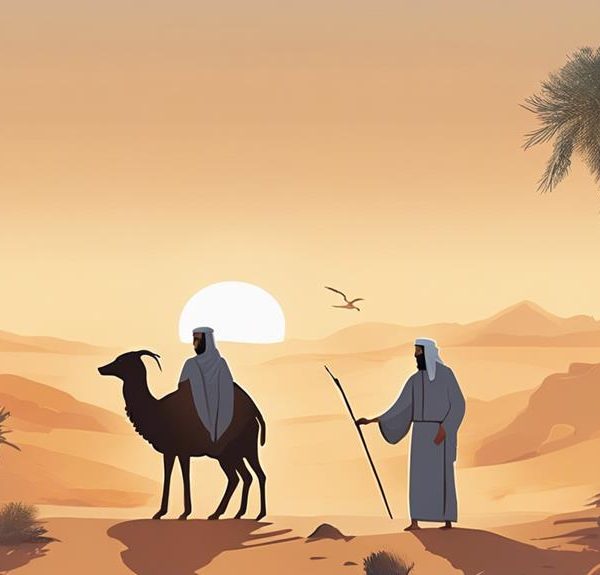
Sign up